
eBook - ePub
88 Piano Classics for Beginners
David Dutkanicz
This is a test
Partager le livre
- 144 pages
- English
- ePUB (adapté aux mobiles)
- Disponible sur iOS et Android
eBook - ePub
88 Piano Classics for Beginners
David Dutkanicz
Détails du livre
Aperçu du livre
Table des matières
Citations
À propos de ce livre
Beginning pianists of all ages will cherish this excellent compilation of classics. Each piece was carefully selected and simplified to help students develop their skills. Many of the greatest composers—J. S. Bach, Beethoven, Brahms, Mendelssohn, Mozart, Rimsky-Korsakov, Rachmaninoff, Tchaikovsky, and others—are represented by several pieces each, some newly adapted for the piano. Composers and works not usually featured in beginner's books include pieces by Borodin, Gluck, Rameau, and Tallis.
Well-known classics include Bach's Brandenburg Concerto No. 3, Debussy's Claire de Lune, Moussorgsky's Pictures at an Exhibition, Satie's Gymnopedie No. 1, Schumann's Child Falling Asleep, and `Spring` from Vivaldi's Four Seasons. Several orchestral pieces have been newly adapted for the piano, including `Dance of the Swan` from Swan Lake, `Elephant` from Carnival of the Animals, `Largo` from Xerxes, and `Waltz of the Flowers` from The Nutcracker.
Well-known classics include Bach's Brandenburg Concerto No. 3, Debussy's Claire de Lune, Moussorgsky's Pictures at an Exhibition, Satie's Gymnopedie No. 1, Schumann's Child Falling Asleep, and `Spring` from Vivaldi's Four Seasons. Several orchestral pieces have been newly adapted for the piano, including `Dance of the Swan` from Swan Lake, `Elephant` from Carnival of the Animals, `Largo` from Xerxes, and `Waltz of the Flowers` from The Nutcracker.
Foire aux questions
Comment puis-je résilier mon abonnement ?
Il vous suffit de vous rendre dans la section compte dans paramètres et de cliquer sur « Résilier l’abonnement ». C’est aussi simple que cela ! Une fois que vous aurez résilié votre abonnement, il restera actif pour le reste de la période pour laquelle vous avez payé. Découvrez-en plus ici.
Puis-je / comment puis-je télécharger des livres ?
Pour le moment, tous nos livres en format ePub adaptés aux mobiles peuvent être téléchargés via l’application. La plupart de nos PDF sont également disponibles en téléchargement et les autres seront téléchargeables très prochainement. Découvrez-en plus ici.
Quelle est la différence entre les formules tarifaires ?
Les deux abonnements vous donnent un accès complet à la bibliothèque et à toutes les fonctionnalités de Perlego. Les seules différences sont les tarifs ainsi que la période d’abonnement : avec l’abonnement annuel, vous économiserez environ 30 % par rapport à 12 mois d’abonnement mensuel.
Qu’est-ce que Perlego ?
Nous sommes un service d’abonnement à des ouvrages universitaires en ligne, où vous pouvez accéder à toute une bibliothèque pour un prix inférieur à celui d’un seul livre par mois. Avec plus d’un million de livres sur plus de 1 000 sujets, nous avons ce qu’il vous faut ! Découvrez-en plus ici.
Prenez-vous en charge la synthèse vocale ?
Recherchez le symbole Écouter sur votre prochain livre pour voir si vous pouvez l’écouter. L’outil Écouter lit le texte à haute voix pour vous, en surlignant le passage qui est en cours de lecture. Vous pouvez le mettre sur pause, l’accélérer ou le ralentir. Découvrez-en plus ici.
Est-ce que 88 Piano Classics for Beginners est un PDF/ePUB en ligne ?
Oui, vous pouvez accéder à 88 Piano Classics for Beginners par David Dutkanicz en format PDF et/ou ePUB ainsi qu’à d’autres livres populaires dans Media & Performing Arts et Classical Music. Nous disposons de plus d’un million d’ouvrages à découvrir dans notre catalogue.
Informations
Sous-sujet
Classical MusicCarl Philip Emmanuel Bach
1714–1788
Solfegietto
Carl Philipp Emanuel was the son of the monumental Johann Sebastian Bach. He and his other brothers—Johann Christian, Wilhelm Friedemann, and Johann Christoph Friedrich—all inherited their father’s wonderful talent and were musically famous in their own right. In this work, be mindful of the dialogue between the two hands, and use the “borrowed” fingerings (written above the left hand) to ease some passages.
Moderato
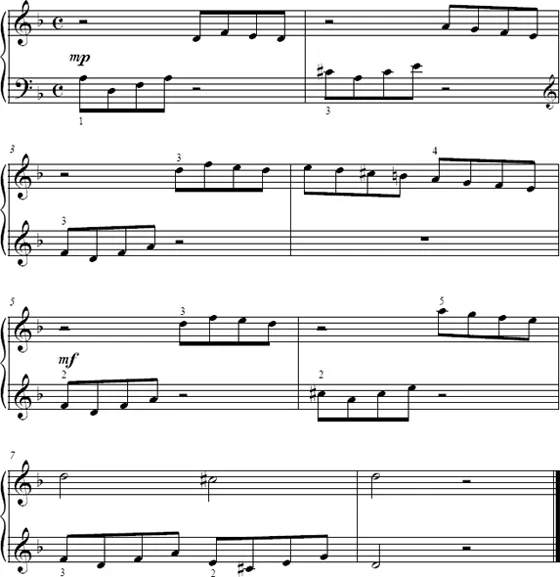
Johann Sebastian Bach
1685–1750
Arioso in G
An arioso is a short piece, usually found in a cantata, where a story is sung by a solo singer. Keep the slow Largo tempo consistent, and try to shape the phrases as a singer would.
Largo
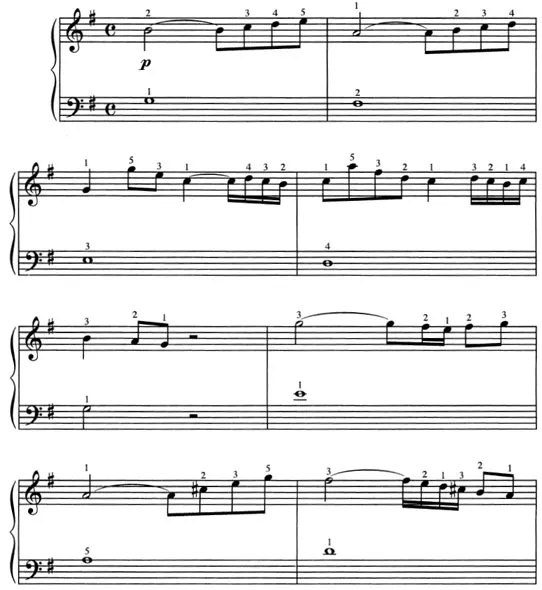
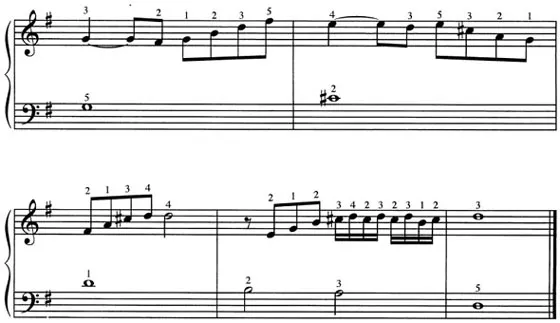
Johann Sebastian Bach
1685–1750
Affetuoso from Brandenburg Concerto No. 5
Bach composed six magnificent concertos for the Prince of Brandenburg. This melody is the opening of the second movement of the fifth. It is marked as affetuoso, meaning “affectionate.”
Moderato

Johann Sebastian Bach
1685–1750
Brandenburg Concerto No. 3 (opening)
This excerpt from the Brandenburg Concertos opens with a dialogue between the right and left hand. Keep the tempo steady so that the melody is uninterrupted. Also, use the left thumb on the repeated Ds to ease the right hand.
Moderato
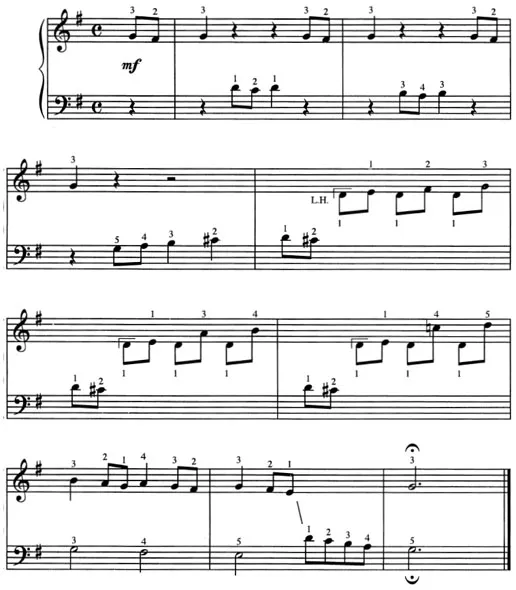
Johann Sebastian Bach
1685–1750
Menuet from Anna Magdalena’s Notebook
This charming piece was found in a notebook of music Bach had written for his wife, Anna Magdalena. Some of the pieces were for teaching, but most were small gifts. Keep the mood merry and light.
Andante
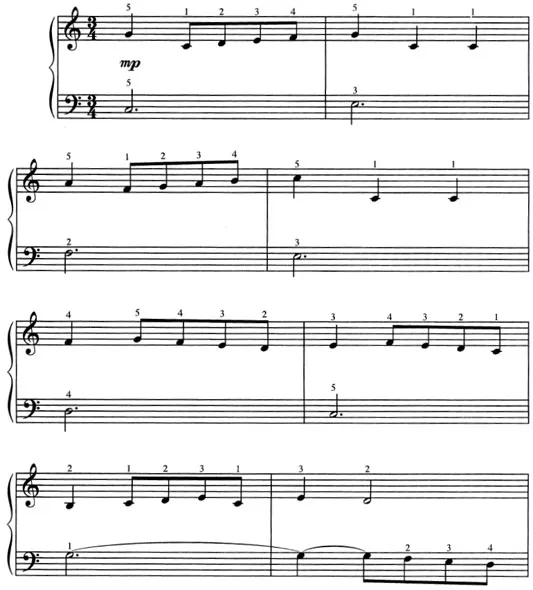
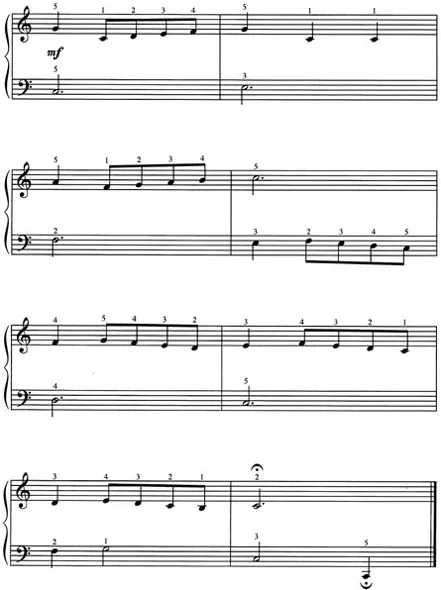
Johann Sebastian Bach
1685–1750
Invention in A Minor
Just like the other Inventions, this one was written to instruct new pupils. Here, Bach presents a challenging arpeggio workout. The music should flow evenly, helped by smoothness in the wrist and fingers.
Moderato
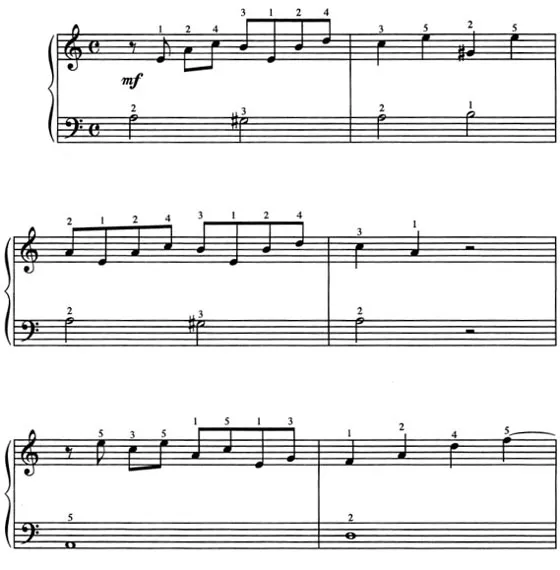
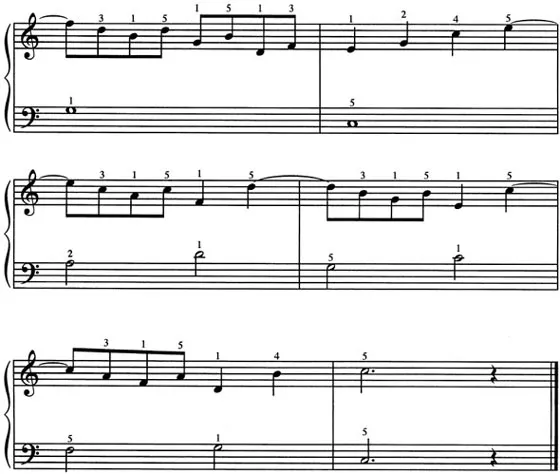
Johann Sebastian Bach
1685–1750
Wachet Auf (“Sleepers Awake”)
This wonderful melody is taken from a church, and translates into “Sleepers Awake.” Keep a firm hold on the tempo – don’t let the dips in melody slow you down. For the full effect, use dynamics to contrast different moods.
Calm and Steady
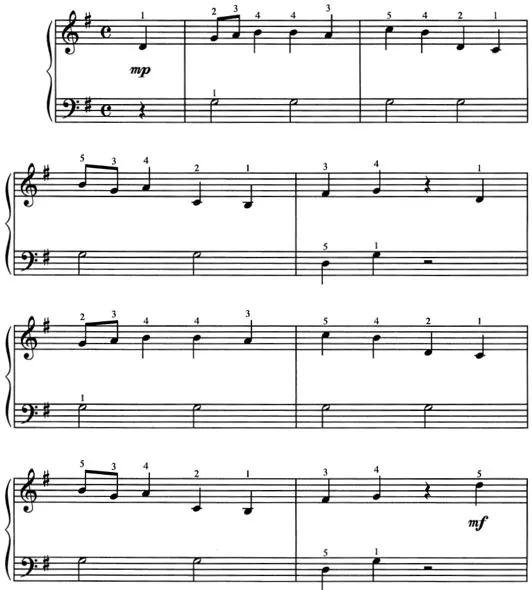

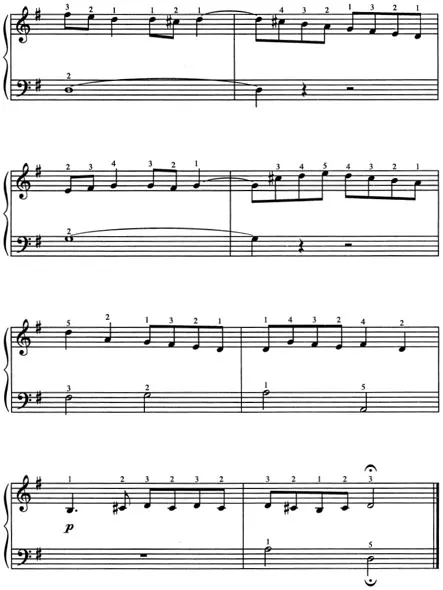
Ludwig van Beethoven
(1770–1827)
Symphony No. 3 (theme)
Symphony No. 3 is nicknamed the “Eroica.” It was written to honor “heroes” and was originally dedicated to Napoleon Bonaparte. Play the melody in a crisp manner, as if it were a military march.
Allegretto
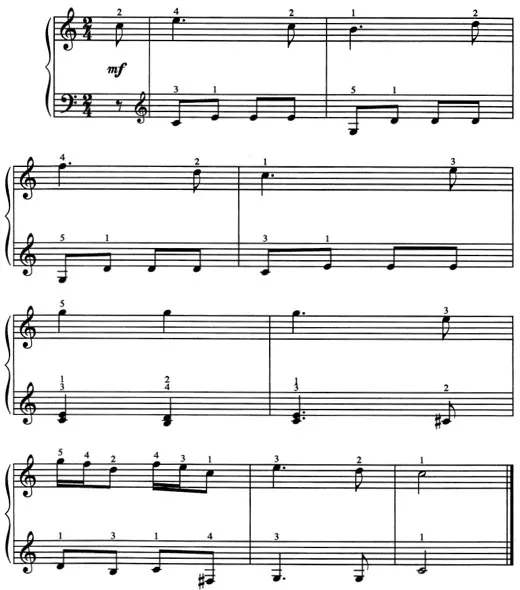
Ludwig van Beethoven
(1770–1827)
Adagio Cantabile from Sonata No. 8
This famous piece is the opening to the second movement of the Piano Sonata No. 8, which is also kno...